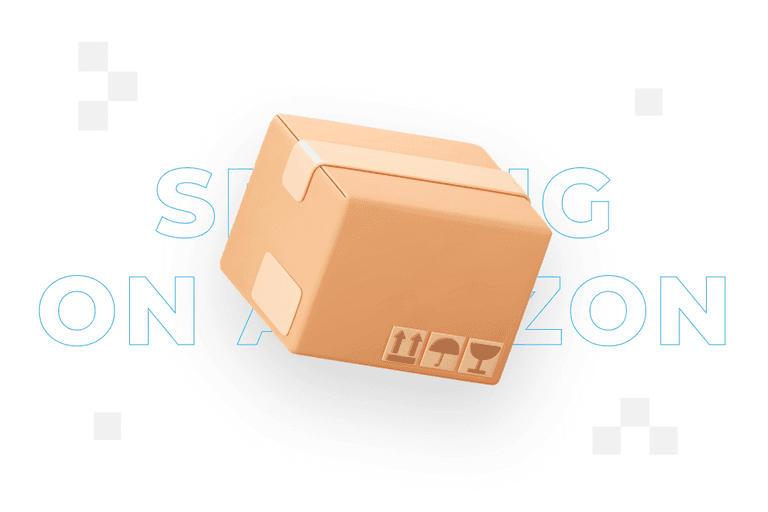
Selling on Amazon – good practice for beginners

Amazon is undoubtedly one of the most important players in the online sales market. This platform offers entrepreneurs tremendous opportunities to reach a wide range of customers all over the world. In order to succeed in selling on Amazon, you need to know how to exploit the potential of this powerful platform. From this article you will learn:
- What is Amazon?
- Why is it important to sell on Amazon?
- Where do I start selling on Amazon?
- What are the basic rules for selling on Amazon?
- How do I sell on Amazon from Poland?
Amazon – definition
Amazon is one of the largest and best-known multinational companies involved in e-commerce, technology and entertainment. It was established in 1994 and was founded by Jeff Bezos. Amazon originally started as an online bookstore and today the company is known as one of the largest e-commerce platforms in the world. It offers a wide range of products, services and technology solutions.
Amazon is a well-known, international company, involved in e-commerce, technology and entertainment.
Definition of selling on Amazon
Amazon is one of the world’s most valuable businesses and has a huge impact on the global economy, e-commerce and technology. It is estimated that Amazon is currently a $1.05 trillion business. It is worth noting that by 2022, the organisation’s valuation has halved[1]. The company employs nearly 1.5 million people worldwide[2].
Benefits of selling on Amazon
Selling on Amazon has many benefits. Some of the main reasons to consider selling on Amazon include:
- Large customer base – Amazon is one of the largest e-commerce platforms in the world, which means access to a huge customer base. Millions of people from all over the world regularly visit Amazon’s website in search of products. According to estimates, the platform’s active user base now numbers more than 300 million people in 180 countries[3].
- Global reach – Amazon operates in many countries around the world, allowing it to sell and deliver products to various international markets. This opens up huge expansion opportunities for entrepreneurs.
- Logistics infrastructure – Amazon has an extensive logistics infrastructure, including distribution centres and delivery system, which allows for fast and efficient delivery of products. There are currently 10 logistics centres in Poland alone[4].
- Value-added services – Amazon offers a range of value-added services, such as loyalty programmes, streaming services, Kindle e-book readers and more, which attracts a diverse range of customers.
- Amazon Advertising – The platform also offers advertising tools that allow sellers to promote their products, increase visibility and reach the right audience.
- Technology support – Amazon is constantly investing in the development of new technologies, such as artificial intelligence and warehouse automation, which can make it easier to manage and scale the business.
- Customer recommendations – satisfied customers leave positive ratings and reviews, on products and services, which can help increase trust in your brand.
- Analytics and data access – Amazon provides analytics tools to track performance and customer behaviour, so you can optimise your marketing efforts.
Getting started on Amazon
How do you start selling on Amazon? There are a few key steps to be taken that will determine our further development path as a seller. Here are the aspects with which you should start the process:
- Market research and category selection – the first step is to thoroughly research the marketplace and select the category of products you would like to sell on Amazon. Make sure that the category you are interested in is viable and competitive.
- Register an account on Amazon Seller Central – go to the Amazon Seller Central website and register your seller account. Choose the right plan that best suits your needs (e.g. individual or professional).
- Select a selling model – decide whether you want to sell as an individual seller (less than 40 listings per month) or as a professional seller (more than 40 listings per month). Professional sellers pay a monthly subscription fee but have access to more advanced tools.
- Identify your product source – identify where you will source products from to sell on Amazon. This could be your own production, a wholesaler, a dropshipping supplier or another source.
- Prepare your products – carefully prepare your products for sale, including packaging, labels, high quality images and product descriptions. Make sure they meet the requirements of the platform.
- Create a seller account – complete your seller account profile on Amazon, including contact information, bank details and preferred payment methods.
- Create listings – add your products on Amazon Seller Central by creating product listings. Make sure listings include specific product information, price, quantity available and delivery terms.
- Order processing – set up delivery and order processing options. Amazon offers logistics services that allow you to store, pack and deliver products on behalf of the seller.
- Price management – track competition and adjust prices – to attract users using the Amazon platform.
- Analytics – use the analytics tools available on Amazon Seller Central to track your sales performance, customer ratings and other data.
- Reputation building and feedback – nurture good feedback and ratings from customers by constantly responding to their questions and needs.
- Grow your business – once you have started selling on Amazon, aim to grow your business by adding new products, improving your marketing strategy and developing your product range.
Ground rules for selling on Amazon
Having a presence on Amazon as a seller involves some basic rules that you need to know and follow. It is worth mentioning that violating the rules can lead to serious consequences, including suspension or closure of the seller’s account. Here are the basic rules for selling on Amazon:
| Quality and integrity principle | Amazon expects all sellers to provide quality products and to act fairly towards customers and other sellers. |
| Accurate product information | Product information, including descriptions, images and specifications, must be accurate and truthful. |
| Competition principle | Unfair competition or attempts to manipulate prices are prohibited. |
| Pricing principle | Product prices should be competitive and fair to customers. Amazon prohibits imposing higher prices on their platform compared to other sales channels. |
| Advertising and marketing principles | Advertisements and promotions must comply with Amazon Advertising rules and must not mislead customers. |
| Feedback and reviews | Attempts to manipulate customer ratings and reviews are strictly prohibited. Reviews must be honest and independent. |
| Ethical and environmental principles | Amazon promotes sustainable and ethical production, so products should comply with their guidelines in these areas. |
| Software and tools | The use of software and tools to automate shopping processes on Amazon must comply with the platform’s policies. |
| Delivery and customer service | Working with Amazon requires delivering products on time and providing adequate customer service. |
| Rules on notifications | Amazon has strict rules for reporting complaints, order problems and returns. Sellers must serve their consumers in accordance with these guidelines. |
| Legal regulations | Sellers must comply with local and international regulations, including those relating to product certification, labelling and safety. |
| Account rules | The use of a single merchant account by multiple people is prohibited and access to the account must be protected. |
| Compliance with the rules | Every seller must comply with the Amazon platform’s terms and conditions, and violations may lead to account suspension or closure. |
Selling on Amazon from Poland – rules
To sell on Amazon from Poland, follow the steps below:
Register on Amazon Seller Central
Go to Amazon Seller Central (https://sellercentral.amazon.com/) and register your seller account. You can choose between an individual account and a professional account. The individual account is suitable if you plan to sell fewer than 40 products per month, while the professional account is more beneficial if you plan to sell more. Once you have registered your account, enter your business information, including contact details and bank information.
Prepare your products
Identify the product categories you plan to sell. Make sure the categories you have selected are available for sale to your Polish seller account. Next, identify where you will source the products to sell from. This could be your own production, a wholesaler, dropshipping (selling by distributing products without owning and stocking them) or another source. Make sure the products meet Amazon’s quality standards and regulations. Prepare merchandise for sale, including description, images, pricing and availability. Ensure quality and high accuracy of information.
Manage pricing and payments
Track other businesses and sellers. Adjust prices to stay competitive in the market. Set up a bank account that is linked to your seller account on Amazon – so you can receive payments from customers. Remember to set up delivery and order processing options. You can also use Amazon FBA (Fulfillment by Amazon) to have the platform take care of storing, packing and delivering products on your behalf.
Set a marketing strategy and develop it
If you want to increase the visibility of your products, you can use the advertising tools available on Amazon Seller Central. Once you have started selling on Amazon, aim to grow it by adding new products. Promote your business to friends and potential new customers – use various marketing channels to do this.
As a seller, be aware of and comply with the Omnibus Directive. This is a key piece of European Union legislation aimed primarily at improving consumer protection. In Poland, the directive has been in force since 1 January 2023. Among other things, the document imposes transparency obligations on sellers, informs about price reductions of goods, prohibits unfair commercial practices and imposes numerous information obligations on sellers towards consumers.
Amazon represents an extraordinary opportunity for entrepreneurs to grow their business. However, as in any field, success requires work, knowledge and continuous improvement. Selling on this platform is not only an opportunity to increase the reach of one’s products, but also a challenge, requiring constant monitoring of changes on the platform, responding to customer feedback and striving to expand the product range and improve the services and marketing strategy implemented.
Footnotes
Contact form
Develop your brand

Rate content:
You may be interested in:





